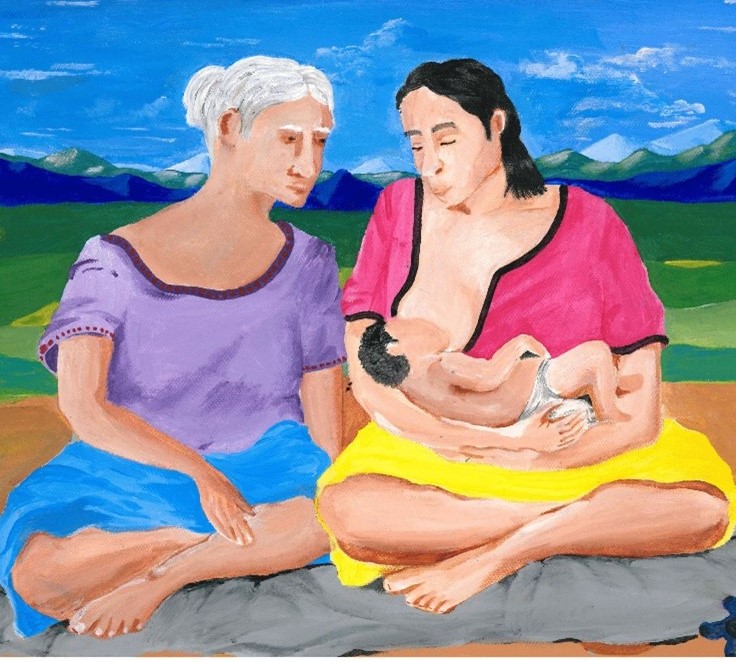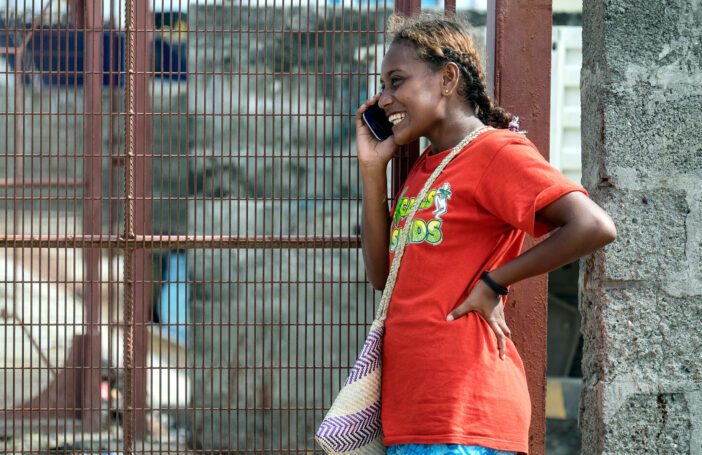Podcasts have grown in popularity as smart phones and access to the internet have become more affordable and available. The topics covered are varied, from cooking to health, and users range from casual listeners to students in the classroom and community.
A quality podcast involves careful planning, practice, recording and editing. In this post, we share our experience of producing the first season of a podcast on women’s health in Samoa, and some of the important takeaways for other aspiring podcasters.
In July 2021, two members of our team – which is drawn from the Faculty of Health Science at the National University of Samoa and clinical practitioners – were invited to attend a training series on podcasting, funded by the Pacific Media Assistance Scheme (PACMAS) through Australia’s Department of Foreign Affairs and Trade. The online training was delivered by an experienced podcaster over one week, with participants from several Pacific island countries. It covered the basics of podcasting, including identifying the target audience, format options, storytelling, workflow, editing and distribution.
We proposed the concept of a podcast series on hard-to-talk-about topics around women’s health in Samoa, targeted to Samoan women. The trainer recommended a season format, with three or four episodes, to allow for deeper exploration of the topic. Although there are several health topics that are difficult to discuss in our predominantly Christian and conservative country, the topic of breast cancer was selected as it is the most common type of cancer affecting women in Samoa.
The proposal for a four-episode pilot season was accepted by PACMAS, which funded equipment and connected us with an experienced mentor from the Australia Broadcasting Corporation (ABC). Unfortunately the pandemic affecting shipping, and the equipment did not arrive in time, so we had to improvise with what we could find.
To make the information accessible to Samoan women locally and abroad, the podcast was recorded in Samoan, although the trailer was recorded in both English and Samoan. The series was named Talanoa i le afaina o le soifua maloloina o tina Samoa, which loosely translates to ‘Talking about women’s health in Samoa’.
For each episode the script was drafted by one team member, and then translated by a bilingual team member. It was then reviewed by the interviewer and interviewee for any translation issues. Since there was no direct translation of some anatomical terms, it took time to discuss and agree on the most suitable or accurate translation.
Recording of each episode took between two and six hours. Interviews were carried out with a breast cancer survivor, a registered nurse who described the steps for breast self-examination, and a surgeon. Editing was done using REAPER software, and background music was sourced from Free Music Archive.
The four episodes range from five to 20 minutes in length. They cover surviving breast cancer, what breast cancer is and how it affects the body, how breast cancer is detected, and how breast cancer is treated.
We uploaded the trailers and episodes, with accompanying descriptions, to the platform Podbean. They are also available on Apple Podcasts, Spotify, Google, and other podcasting platforms. We launched the podcast on 17 December 2021. And we have some lessons from the process that we would like to share with interested podcasters.
Consider the purpose of your podcast and your target audience when deciding the best format. Podcast formats can be an interview each week with a new person, an audio journal, or as with ours, a season with several episodes. Your podcast cannot be all things to all people, so you need to determine your target demographic and tailor for them.
Careful planning and commitment are crucial: podcasts are not as easy to produce as it may appear. Our podcast trainer emphasised the importance of keeping our promise to our listeners – break the promise, lose the listeners. In other words, if you cannot deliver a podcast each week then do not promise a podcast each week. After considering the time to design the series, write scripts, translate content, practice, record and edit, we acknowledged we couldn’t upload episodes consistently on a schedule, so we decided to upload a new season every few months.
Invest some time in choosing the name and the image for your podcast. The image is like a book cover, it encourages listeners to click and listen, and the same with the name. Since it was too expensive to hire a professional graphic designer, we contracted one of the nursing students, an amateur artist, to do a painting for the podcast image.
You do not need a credit card to set up a podcast account, but you have to set up accounts on Apple Podcasts and Spotify for Podcasters. We used Podbean, a podcast host that connects across different platforms, including Apple, Spotify and Google. There is a free option with a limit on the length of audio and descriptions that can be uploaded, but it is adequate for one season. As your podcast grows you can explore the paid options which allow longer audio and description.
Basic equipment can work, so don’t be demotivated if you don’t have the latest. We had to use what we could find locally in Samoa. Based on our experience, the three essentials are a USB condenser microphone to record audio (we used a Samson Go Mic), a headset that connects to your computer, and a computer with audio editing software installed.
Finding a quiet place to record is important, but ambient sounds can create authenticity. We didn’t have access to a sound-proof room, so recording in silence was difficult. Barking dogs, chickens and cars reminded us of where we were, and ultimately, we decided to keep these background sounds.
Background music draws your listener in and sets the tone; consider websites which offer free music with attribution of the sources.
As podcasts are a less used social media tool or medium for health communications, growing your audience takes time. Be patient, use your networks on social media to share the link for your podcast, prepare an accessible press kit, and keep sharing with your friends and colleagues.
Thus far there have been 90 downloads in total, from Podbean, Apple, iTunes and Chrome. We have also shared the audio with the National University of Samoa radio station for local broadcast. Feedback from friends and colleagues who have listened has been positive.
Producing the podcast was challenging. The key for us was to stay focused on the goal, and the benefit the podcast would bring for Samoan women. Ultimately the hurdles were not insurmountable for us as amateurs, and hopefully our lessons will lower the hurdles for other aspiring podcasters.
We look forward to producing our next season on sexually transmitted diseases, and supporting our colleagues to produce a ‘brother’ podcast focused on hard-to-discuss health topics for men in Samoa.
Listen to the podcast Talanoa i le afaina o le soifua maloloina o tina Samoa.





